This watch was (foolishly, perhaps) one of my first purchases, and thus predates my camera by several months. Since I didn't have the opportunity to photograph it when first acquired, you will I am sure notice that it is not pristine, having been worn perhaps 50 or so times. In addition, I decided that better resolution of the critical front and back could be had with an actual scanner, and that has resulted in some "rainbow" artifacts at the balance and escapement. Being a perpetual calendar, I elected not to allow it to run to a stop before picturing.
I bought this watch in March of 2000, well before I had any understanding that the feeling "just buy one great watch and get it over with" was incompatible with my newly-acquired appreciation of mechanical watches. However, it does possess many characteristics appropriate to my original intention: It is, in my opinion, a distinctive yet beautiful, classic design, rendered in platinum, a durable, understated metal, providing time and full calendar for the next century (good thing I didn't buy it a year earlier) and unparalleled visual interest. I figured this and a couple of other watches purchased soon thereafter (an Invicta LE, for water/sport/play and a Dufeau chronograph for timing steaks and movies and such) would pretty much set me up for years to come. Beyond that I would just pick up a little education by cruising that TimeZone site that the good Mr. Ludwig's article My Descent into Hell
had pointed me to...
A couple of things have become clear, besides the monstrous reminder that knowledge and wisdom come After familiarity and exposure to a new field, rather than beforehand: This is a watch of some existential significance, not one suited to casually "checking the time" or "seeing how long it is until..." or even "the time? Sure, it's about..." In fact, it is actually rather difficult to divine the "time of day" from this watch, let alone the rather more arcane (but locally important) information such as day, date, month and moonphase. After considering AP's choice of polished (white metal) hour and minute hands and blued subsidiary hands, displayed against overwhelmingly silver and gray motion-works and the blue and gray tracks and lettering of what passes for a dial...
Well, I just get the distinct feeling that this watch was intended for contemplation, rather than ordinary use. Perhaps its release in the late 1970's reflects AP's acknowledgement that, regarding mechanical watches, simple time-telling had to be secondary to other considerations or there would be no market for them at all (especially really expensive ones, like this). The whole package puts me in mind, oddly enough, of another rather distinctive AP, the Philosopher's watch, issued in 1982:
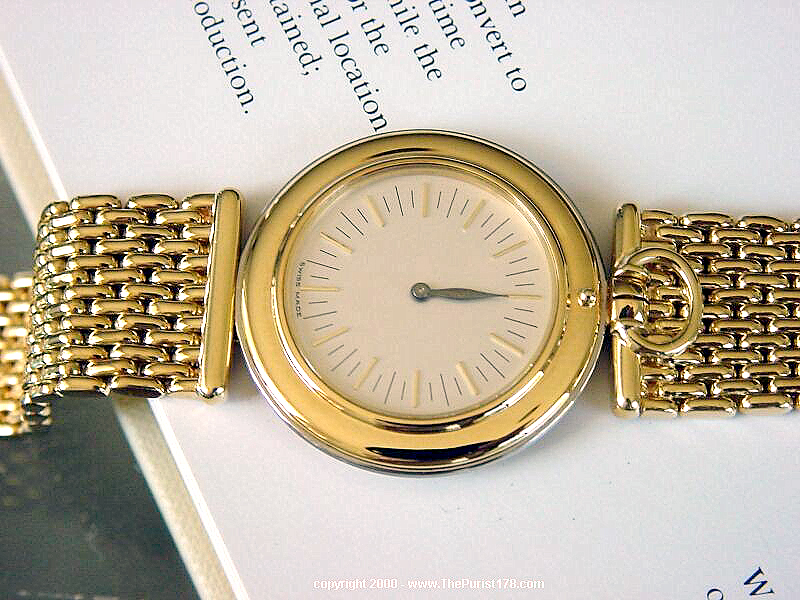
This watch, which reaches back the few hundred years to predate the minute-hand, allows the wearer, by use of a rotating bezel, to track the time in 2 zones, however the precision obtained by glancing at it will be in proportion to the time and effort spent studying the single hand's exact location. Although certainly at the opposite pole in terms of function and design from my watch, the requirement of (and reward for) active involvement on the part of the wearer seems to reflect the same ethos; neither is a watch for casual use, by which I mean not simply to read the time. Oh, the current time is there, in the one case in the molecular crevices which define the exact position of that lonely pointing arm...and in the other in that subdued complication (yes...) of blue and silver and gray...but that is almost beside the point. One other thing: With every simple skeleton watch I have seen, the clear intent, and often accomplishment, is to reveal the wonderful interplay of forces and mechanics which allows a watch to function so astonishingly well, and perhaps to demonstrate the watchmaker's additional artistic talents via unusual decoration of the remaining supporting bits. In all candor, no matter which side of this watch I study, my understanding of exactly what is going on inside, and how, barely reaches much beyond the 30 or so main parts that I recognize from much simpler movements. I am tentatively attributing this to a combination of my own ignorance (this I can fix), the extraordinarily crowded visual field presented by all those functional parts over- and under-layered with decorated metalwork and of course, the inherently ambiguous nature of time itself...
Click the pictures for even larger!
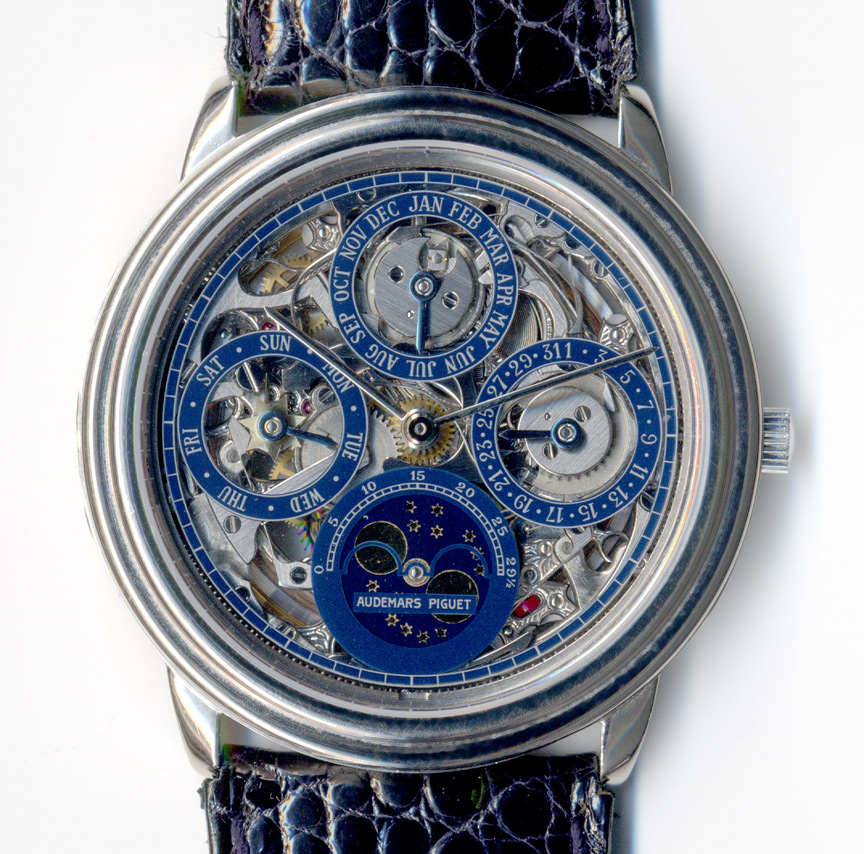
Regarding the movement, the base caliber #2120 is 28mm in diameter and 2.45mm thick (4.0mm as a perpetual calendar), and runs at 19.8kbph. There are two exceptional Horologium articles detailing this obviously excellent and versatile base movement: The Most Exclusive Automatic... and The Inventory of a Simple Watch. As for this movement as a perpetual, it is lacking the ever-popular "3 plus leap" years indicator, although certainly not it's function, and speaking from almost thorough ignorance (danger! danger!) it appears to have been accomplished by attaching a module to the top side of the movement, based on the quite possibly erroneous observation that the view from the back side looks a lot more familiar to me than from the front.
Although the 2120 line is still going strong (AP recently purchased the tooling as part of it's divestiture of part of JLC), this classic iteration has long been supplanted by the far more successful Royal Oak and Millenary lines, while the classic "ribbed" case styling has inexplicably been ceded to Blancpain, from which it is almost certainly never returning. I gather these watches (the complicated ones, anyhow) never sold too well, and I suppose that is probably to be expected given their lack of practicality. As for mine, it occupies my only winder when not on wrist, appears to keep exceptional time (recently reset forward 2-3 minutes after more than one year, 1/2 second per day slow by my calculation), and although hardly my last, one and only purchase, it remains a favorite and stimulating piece.
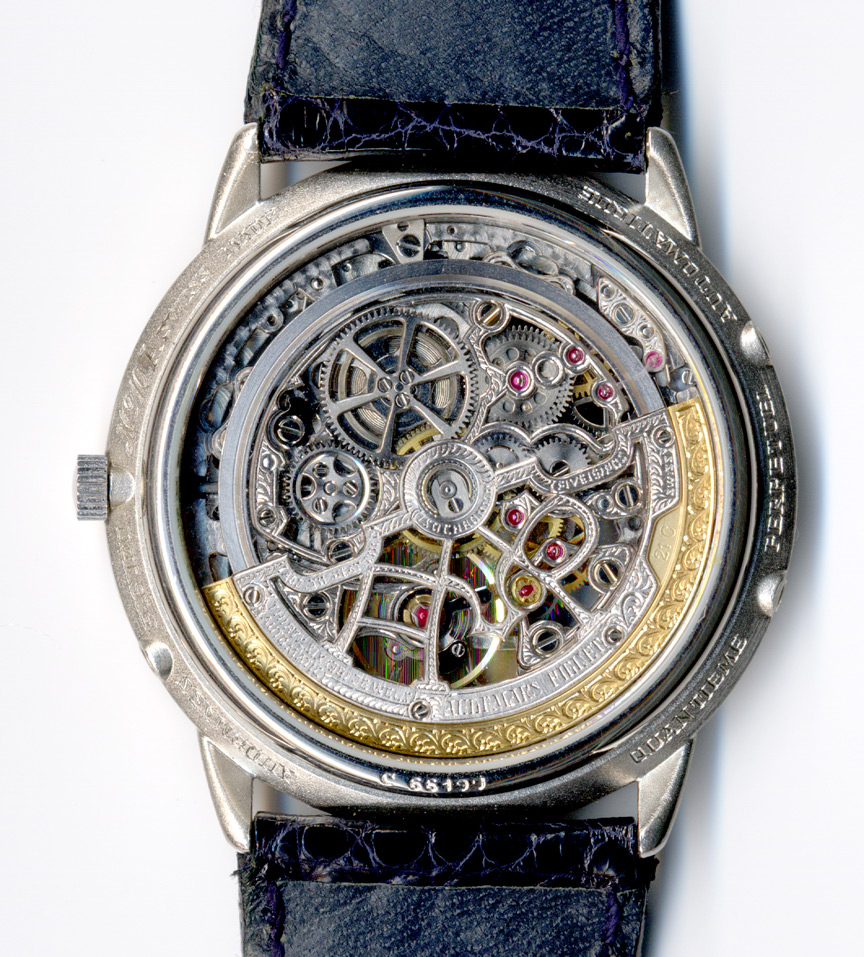
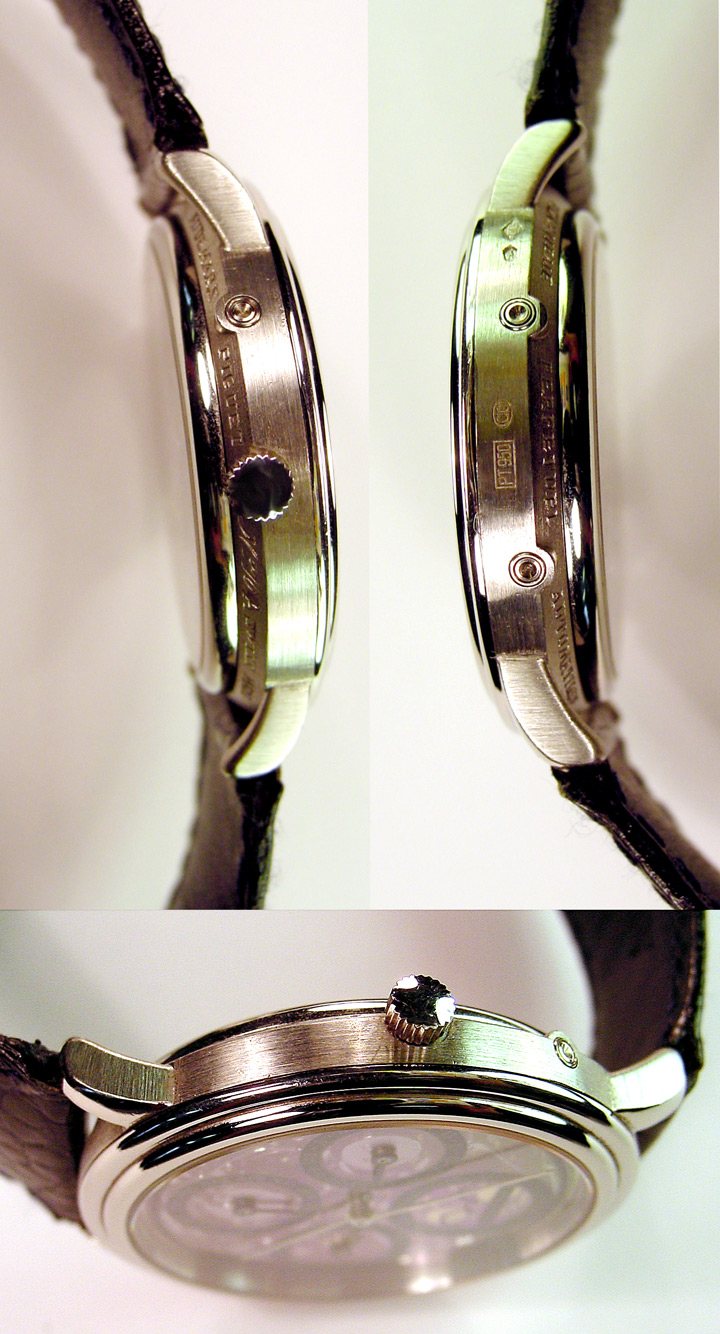
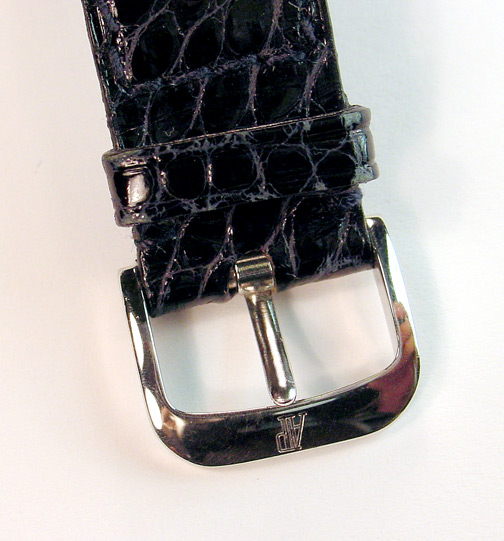
You may exercise your further interest in Audemars Piguet watches at: http://network54.com/Hide/Forum/125468
Please check out the rest of my Watch Articles and Pics
I hope you enjoyed this!
SteveG
steve@ninanet.net
July 25, 2001
All content Copyright asserted 2003